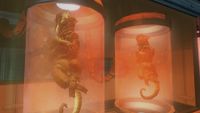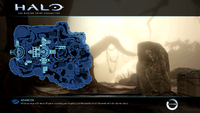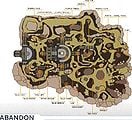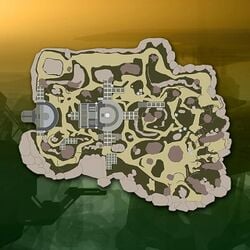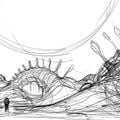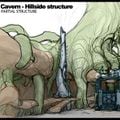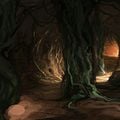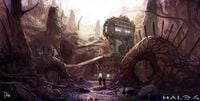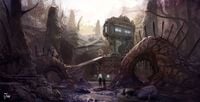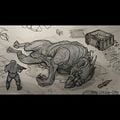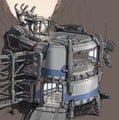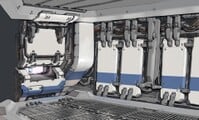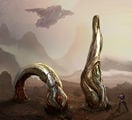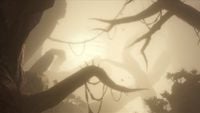Abandon
From Halopedia, the Halo wiki
| Abandon | |
|---|---|
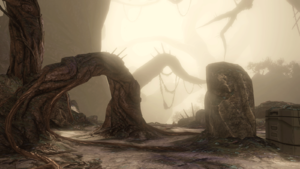
| |
| Map overview | |
|
Game: |
|
|
Map file name (?): |
|
| Lore information | |
|
Map designation (?): |
War Games Map_Set/: 505-2[2] |
|
Location: |
ONI research facility on Erebus VII[2] |
| Gameplay overview | |
|
Terrain: |
Dense alien jungle, ONI buildings |
|
Map layout: |
Asymmetrical |
|
Recommended number of players: |
8 |
|
Recommended gametype(s): |
|
| “ | Initial surveys of Erebus VII were promising and hopeful, but the events which followed tell a far darker story. | ” |
Abandon is an asymmetrical multiplayer arena map in Halo 4.[2]
Universe and lore[edit]
- Main article: Erebus VII
On the remote world of Erebus VII, at the very edge of human-occupied space, an ONI research facility which was once teeming with researchers now lies eerily vacant. Although the hostility of this world had been initially considered by its team leaders, it is tragically clear that a great many ‘things’ had simply not been taken into account. Initial surveys of this area were bold and promising, but it quickly became clear that these reports were far more hubris than logic.[3][4] Inside one of the map's structures, two transparent containers can be seen holding Eiyaa-Mahtuhaa specimens suspended in preserving liquid.
Overview[edit]
Layout[edit]
Abandon is an asymmetrical, close-quarters small scale 4v4 map.[4]
The map features a three story building in the center of a dark forest environment, allowing for some long ranged combat but offering more short range skirmishes due to the trees and tight spaces. It features 3 man-cannons (one in each main structure, and one inside a tree between them) and ramps leading to all levels.
Callouts[edit]
The following are locations on the map that were named in the Halo 4: Official Game Guide:
- Purple Cave
- Purple Rocks
- Purple Bridge
- Purple Trees
- Crates
- Tree Top
- Purple Cliff
- Roots
- Small Rock
- Cliff
- Blue Cave
- Blue Rocks
- Tree Lift
- Brake Bridge
- Blue Bridge
- Blue Ramp
- Lab
- Main Ramp
- Big Rock
- Woods
Strategies[edit]
- The jetpack is useful to get to high ledges.
- It is recommended for players to use a semi-automatic weapon, like the DMR, due to the large amount of obstructions on the map.
- The Shotgun or Scattershot are also useful weapons on the map, especially when the player is inside the UNSC structures.
- It is not recommended for players to camp at the top of the gravity lift in the UNSC building, because the exposed area allows there to be multiple ways for the camper to be killed.
Production notes[edit]
According to Kynan Pearson, one of the lead Halo 4 multiplayer map designer, the map was specifically geared towards Team Slayer and the Flood game types.[5]
The map was planned to feature organisms called meat loops, muscle humps, gas sacks, smokers, and momma trees throughout its various iterations during development. Some of these organisms can be seen in the concept art.
Abandon had three distinct iterations. The first was the balls-to-the-wall alien greenhouse version. There was a dead monster-like creature on this map that you could use as a ramp, and there was a story that went along with it—something along the lines of: the monster attacked, killed the scientists, and then died from injuries it sustained. There were numerous subplots and supporting elements scattered around the map and in the skybox.[4]
The next iteration featured smaller animals trapped in containers underneath the map as the reason for the science team’s ‘disappearance,’ and early concepts show that the place was pretty badly assaulted. This version represented the first paring pass that reined the environment into a simpler and more believable statement of the original theme and cropped out some of the unnecessary components (we wanted to get back to what we really liked about the original concept art).[4]
The final iteration was an even tighter trimming of things that weren’t needed or weren’t working. The building’s interior looks relatively pristine compared to where it was originally, which is definitely to its advantage from a play-ability perspective, because it provides a stark difference between inside the structures and the wild flora that grows outside it.[4]
Trivia[edit]
One of the map's lifts is located inside a hollowed-out tree and seems to be powered by escaping air from within an organic structure.
Gallery[edit]

|
Browse more images in this article's gallery page. |
Concept art of a UNSC gravity lift on the map.
Sources[edit]
- ^ Halo 4 Editing Kit, game file
H4EK\tags\levels\multi\ca_blood_cavern\ca_blood_cavern.scenario - ^ a b c Halo 4: The Essential Visual Guide - Locations, page 211
- ^ Halo 4 Interactive Guide (Retrieved on Jun 1, 2020) [archive]
- ^ a b c d e IGN, Halo 4 Wiki Guide: Development aspects of Abandon and some lore info (Retrieved on Jun 1, 2020) [archive]
- ^ YouTube: Halo 4 Abandon Multiplayer Map Walkthrough with 343i
